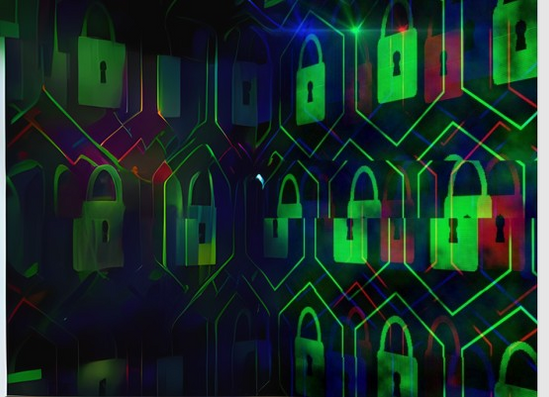If you're still treating cybersecurity as an annual IT project, you're not just behind—you're exposed.
The cybersecurity landscape has fundamentally shifted. In Q1 2025 alone, ransomware-linked data leak sites reported 2,314 victims—a 213% spike year-over-year. But the real story isn't just about volume. It's about velocity.
What once took attackers days now happens in minutes. And the traditional defences—annual penetration tests, siloed security tools, reactive incident response—can no longer keep pace.
The Three Forces Reshaping Enterprise Security
1. AI has armed Attackers
Artificial intelligence hasn't just accelerated innovation—it's weaponised it. Threat actors now use large language models to autonomously plan and execute cyberattacks, creating and deploying advanced ransomware in hours rather than months. Meanwhile, Anthropic's AI model Claude recently outperformed human security professionals in hacking challenges.
The implication for leadership: Human-driven incident response cannot match AI-powered attack velocity. Your security strategy must evolve from reactive to predictive.
2. Microsoft's security consolidation creates both opportunity and risk
Microsoft now ingests 84 trillion security signals daily—more telemetry than any other organisation on the planet. Their security revenue now exceeds $37 billion, dwarfing competitors like CrowdStrike and Palo Alto Networks combined.
For organisations already invested in M365 and Azure, this consolidation offers efficiency and cost savings. But it also raises critical questions: Are we moving towards a single-vendor security monopoly? What happens to innovation, resilience, and control?
3. Your attack surface now extends far beyond Microsoft
The average enterprise uses over 130 SaaS applications—yet security teams typically know about only half of them. Add multi-cloud deployments, shadow IT, partner integrations, and dark web exposure, and the perimeter you thought you were defending no longer exists.
The gap: Whilst Microsoft provides a strong foundation, your real vulnerabilities lie in the edges they don't touch.
Why This Matters to Your Board
Cyber insurance underwriters have hardened their requirements. Regulators—from the EU's DORA to the UK's Cyber Security & Resilience Bill—now mandate continuous resilience, not annual compliance. And investors increasingly view cybersecurity as non-discretionary spending that directly impacts enterprise value.
This isn't an IT problem anymore. It's a business continuity issue, a regulatory obligation, and a board-level accountability.
The Shift from Tools to Operations
The most significant change isn't technical—it's strategic. Leading organisations are moving from reactive, tool-based security to continuous Security Operations (SecOps): a living, breathing defence system that combines 24/7 monitoring, automated remediation, and risk-driven governance.
This isn't an upgrade. It's a fundamental reimagining of how businesses must defend themselves.
The organisations that thrive in 2026 will be those that understand security isn't a project with a completion date—it's an operating model that evolves as quickly as the threats it faces.
What a Modern Security Posture Looks Like
Continuous, not annual:
Always-on monitoring and real-time incident response replace point-in-time assessments.
Integrated, not siloed:
Microsoft's native capabilities are fully leveraged and extended across your entire digital estate
Governed, not reactive:
Security posture is maintained through constant policy enforcement aligned to CIS and Cyber Essentials Plus standards
Business-aligned, not technical:
Monthly risk reporting in language your board and insurers understand.
The Path Forward
Most organisations already have the technology they need. What's missing isn't more tools—it's operation, integration, and governance.
Download our comprehensive whitepaper: "Rethinking Cybersecurity for 2025: SecOps as Strategy, Not Tools" to explore:
- - How AI is fundamentally changing both offensive and defensive cybersecurity
- - The strategic implications of Microsoft's expanding security footprint
- - Why continuous Security Operations has become a business necessity
- - How to secure the parts of your organisation Microsoft doesn't touch—SaaS, dark web exposure, and external attack surfaces
The report includes actionable frameworks, real-world case examples, and a roadmap for moving from reactive security to strategic resilience.
Ready to assess your current security posture?
Download our Cyber Security Whitepaper to understand exactly where your organisation stands, and the next steps to take before the next breach attempt.
Looking for more detailed answers?
Visit our Complete Guide to Security Operations in 2025: Executive FAQ.
The risk isn't using Microsoft—it's assuming Microsoft covers everything. Your enterprise runs 130+ SaaS applications, multi-cloud workloads, and faces dark web exposure that Microsoft's native tools don't address.
You can see the strategic framework for extending Microsoft without creating integration gaps in our Cyber Security Whitepaper.
Show them the numbers: breach timelines have compressed from days to minutes, and cyber insurers now require continuous monitoring evidence—not annual audits. Annual testing creates 364 days of blind spots your board can't insure against.
Our whitepaper includes a board-ready business case framework.
Augment, don't replace. Properly configured automation can close 80-90% of incidents without human intervention, freeing your team for genuine threats. The gap isn't your people—it's the integration layer between your SIEM, EDR, and identity management.
See the complete operational model in our whitepaper.
You have the technology; you're missing operational maturity. Most failures stem from incomplete configuration, ungoverned policies, and SaaS applications bypassing Entra ID entirely.
Our whitepaper outlines the governance framework that transforms deployed tools into compliant security posture.
Insurers want operational resilience, not checkbox compliance: enforced MFA (verified, not just enabled), EDR with demonstrated detection, tested incident response playbooks, and continuous vulnerability management with defined SLAs. They no longer accept annual fire inspections—they want 24/7 monitoring.
Read the complete underwriting requirements guide in our whitepaper.





SUBMIT YOUR COMMENT